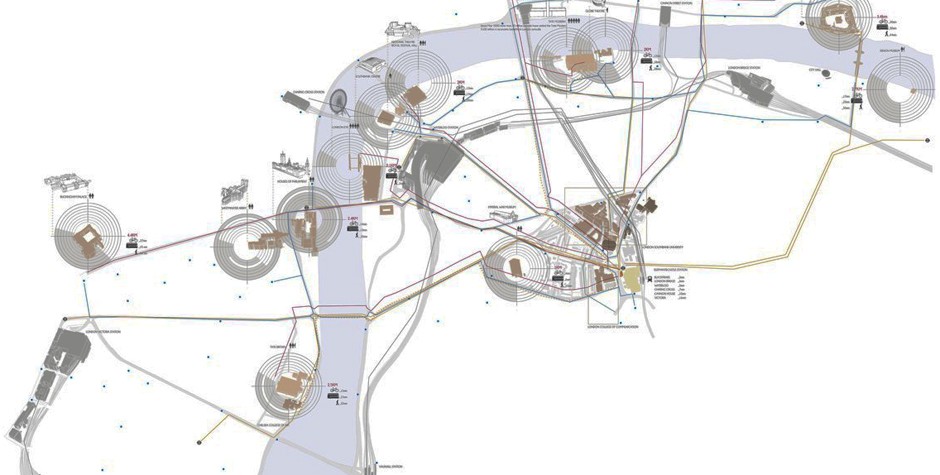A Civic Institution for Elephant & Castle
‘…could architects avoid seeing architecture and planning as the faithful product of dominant society, viewing their craft, on the contrary, as a catalyst for change? Could architects reverse the proposition and, instead of serving a conservative society that acts upon our cities, have the city act upon society?’ Bernard Tschumi, Architecture and Disjunction
Studio 10 will continued its investigations into the structures and processes of the urban environment that make the city work, and our experimentation with the tools and mechanisms of architecture to manifest social, political and economic change. We devised dynamic means of engaging directly with the lived reality of the city and developed complex, multi-scalar architectural and urban proposals that move the city on. We explored the role of civic institutions in structuring the urban environment, and experimented with alternative spatial and organisational arrangements.
We questioned whether the civic sector could become a productive sector that supports bottom-up enterprise and growth, and constructed new, integrated spatial configurations to support this.
We immersed ourselves in Elephant & Castle – a central-London melting pot of social and economic diversity and an area of stark contrasts and contradictions – where metro-sexuals and the ‘Urban Intelligence’ share housing blocks with ethnic minority communities and some of the poorest people in Britain; where some of the best / worst examples of utopian modernist planning surrounds the faded grandeur of Victorian London; where an essay in post-war housing typologies concluded in London’s most venerated live-work community; where huge expanses of road and rail infrastructure overshadow an intensity of human activity and small-scale economic production; where London’s first planned shopping mall is inhabited by irregular activities and informal public spaces; and where a huge masterplan and massive urban regeneration strategy is set to transform its future for good.
With a large-scale regeneration programme set to transform its future, Elephant & Castle’s unique mix of public life is under threat. Will the usual suspects of money and commercial ambition lead to an unavoidable gentrification of the area? Will large-scale changes to the borough’s physical topography alter its economic and social landscape beyond recognition? Will proposed masterplans reduce or inflate the divisions between rich and poor? In such a context, the pressure is on for public institutions to deliver essential public services and to promote social integration.
Students works included innovative hybrids of the formal and socially excluded, speculation of sustainable food production, process and consumption and environmental strategies gaining energy from London cyclists in return to better service to its citizens.
In February 2012 students engaged in a live residency in the Elephant&Castle shopping centre, geared to be closed and redeveloped. The place offered an outstanding opportunity zooming into very special social relationships grown over time between the local and the transient community of commuters and customers of the mall.


Comments are closed.